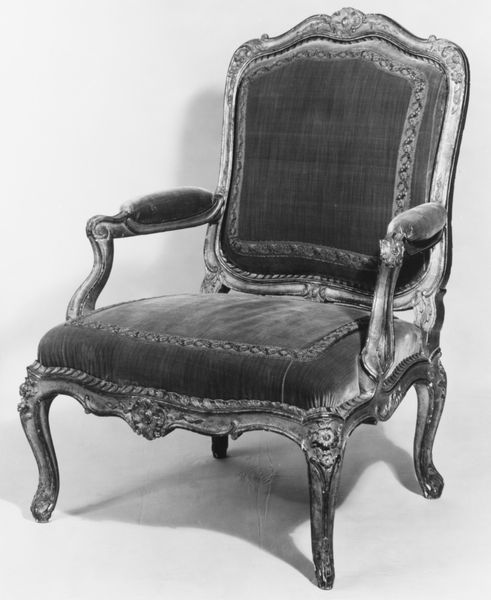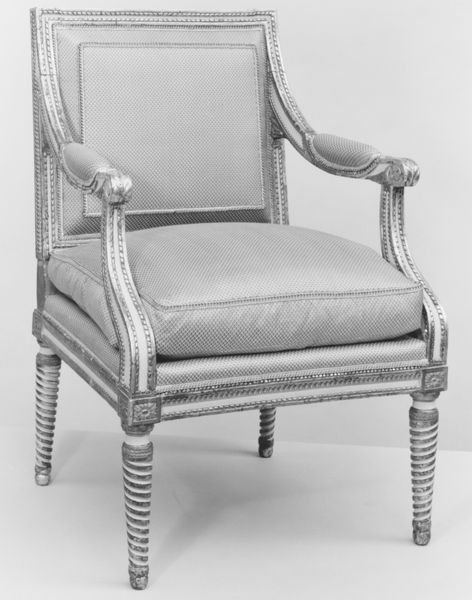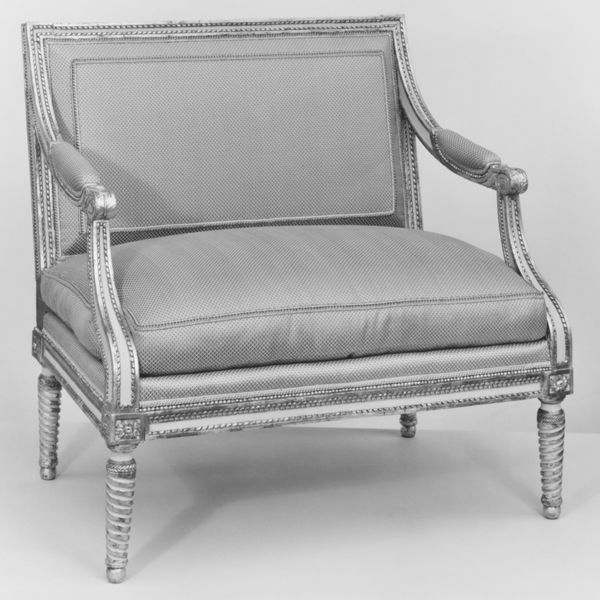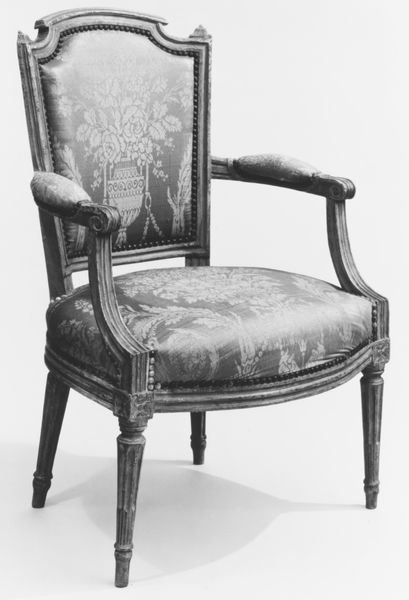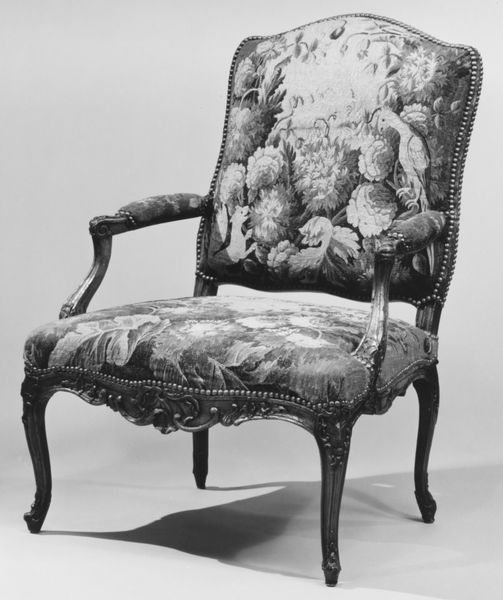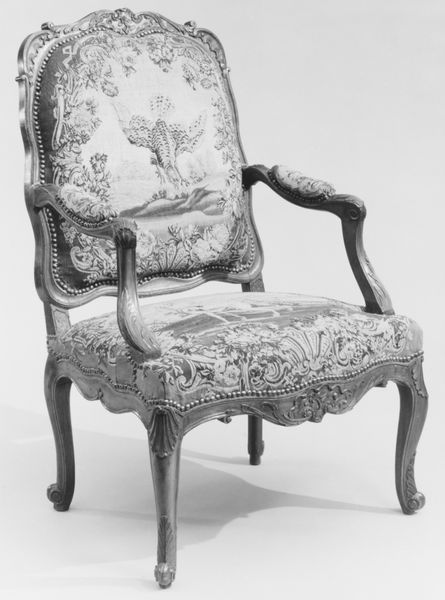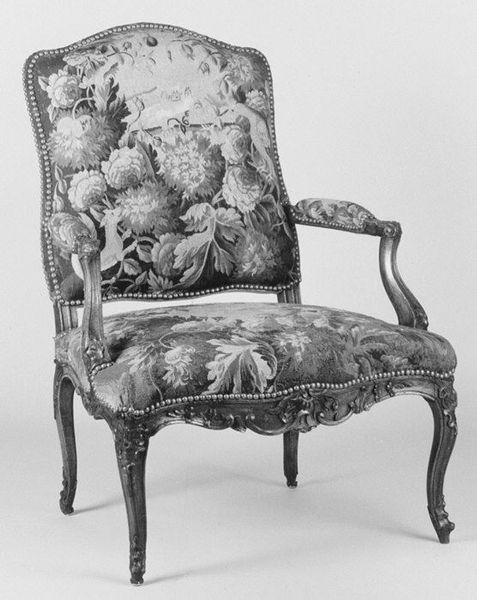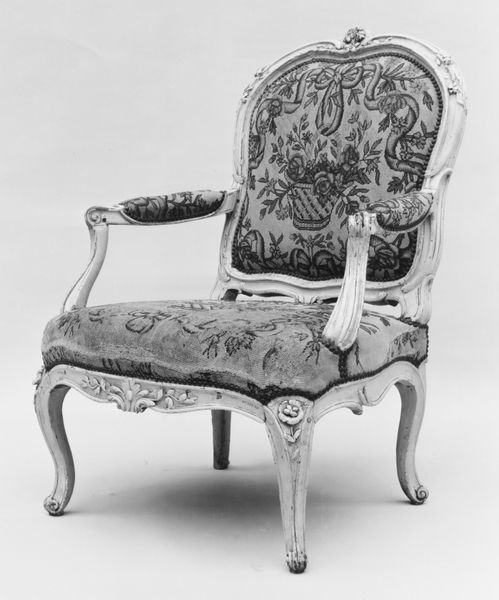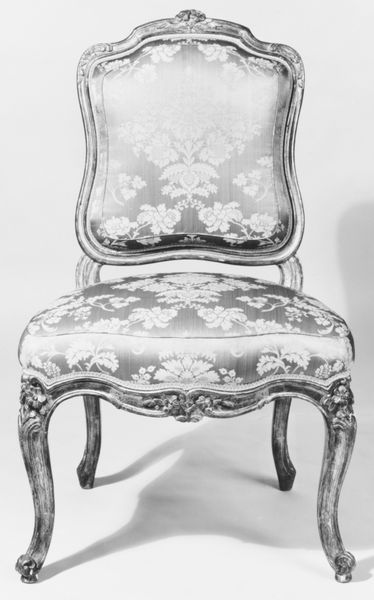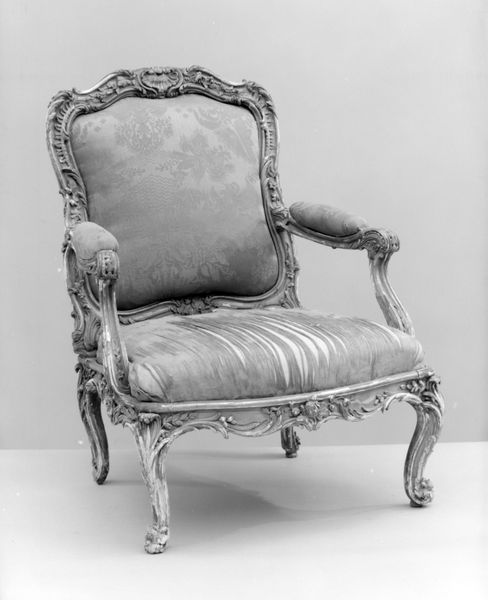
textile, sculpture, wood
#
furniture
#
textile
#
sculpture
#
wood
#
decorative-art
#
rococo
Dimensions: Overall: 34 3/4 × 23 3/4 × 23 1/4 in. (88.3 × 60.3 × 59.1 cm)
Copyright: Public Domain
Curator: Welcome! Before us sits an 18th-century armchair, presently held at the Metropolitan Museum of Art, and most probably made by Charles Vincent Bara. This piece exemplifies Rococo design. Editor: It exudes such refinement! My initial impression is that this is something meant for intimate settings, for private conversations and perhaps secret assignations. Look at those curves. The carved wood flows seamlessly, beckoning the eye and suggesting movement. Curator: You're right to key in on those curving lines – such shapes epitomized elite taste during this period. Furniture styles influenced socio-political changes of 18th-century France. The rise of the "salon" – intimate, private social spaces – favored pieces that emphasized delicacy and visual elegance over the imposing grandeur of the court. Editor: The very patterns in the textile scream of hidden gardens, secret rendezvous, the artifice of love and games. What could you tell me about the symbolism involved? Curator: Well, the wood is undoubtedly chosen to evoke a natural, light feel, but I think it's just as much to do with political maneuvering. The aristocracy loved demonstrating the idea that their reign was akin to divine nature. Their taste demanded a crafted world designed for comfort. Editor: Absolutely. Each curve is a gesture. A way of speaking through material and form. The repetition of motifs across the upholstery creates a sense of abundance and pleasure. Perhaps not so different from the power a medieval king might evoke with the finery of his thrown but on a scale suitable for use in a more delicate setting, more private. Curator: Indeed, the "decorative arts" often acted as quiet political languages in eighteenth-century France. Owning and displaying such items wasn't just about taste, but about social and economic positioning. And this kind of subtle language, the curve of the arm or shape of the leg, conveyed one's commitment or not to a particular moment in politics. It is quiet commentary turned material. Editor: Well, I’ll certainly think about how even the simplest object contains volumes. Looking closely really is an opening to another world. Curator: It certainly is. And through thoughtful investigation of objects like this armchair, we understand more about how those past worlds operate still within our modern culture.
Comments
No comments
Be the first to comment and join the conversation on the ultimate creative platform.
